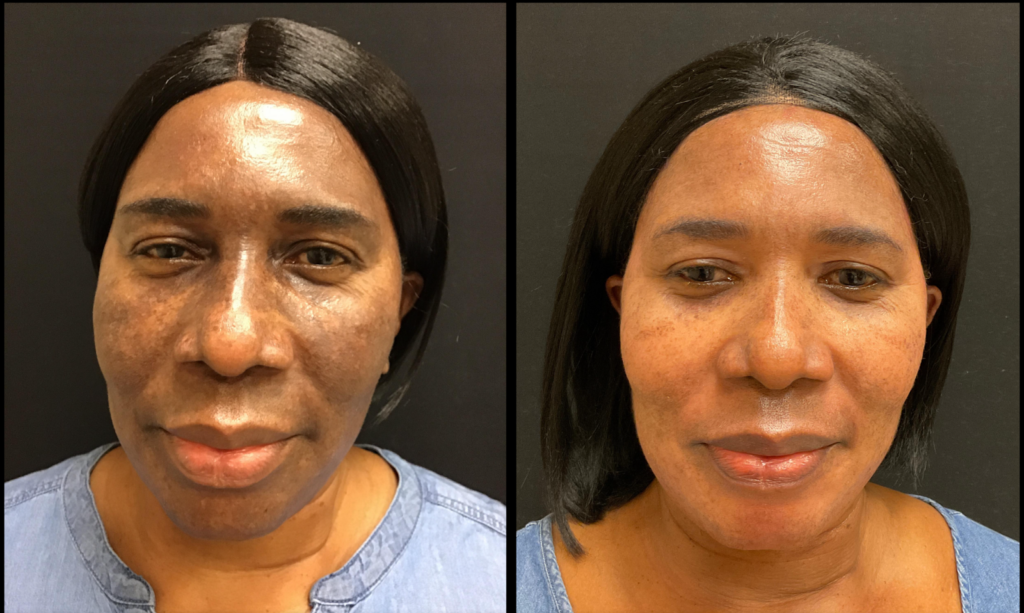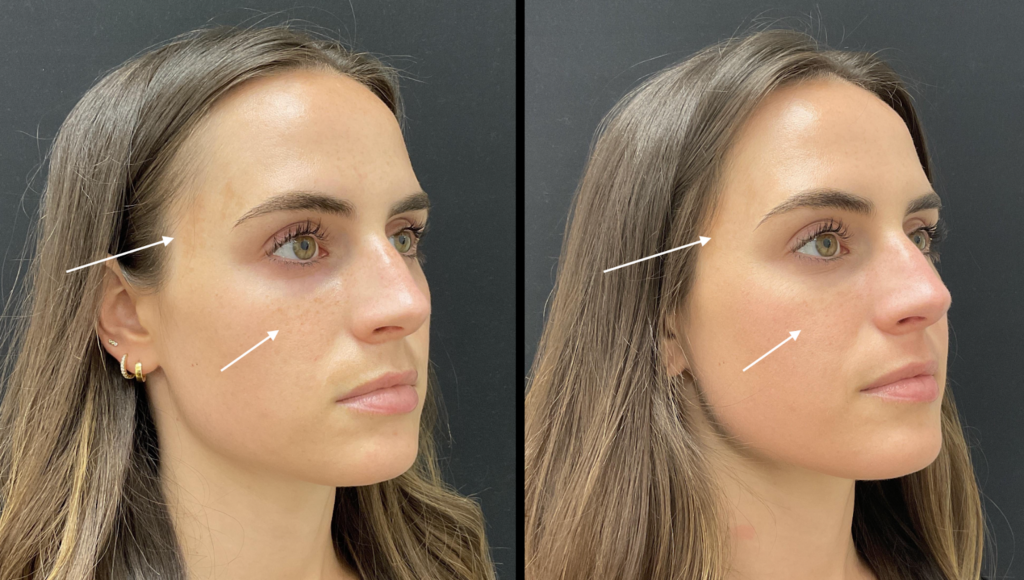Melasma is a condition that affects 1 percent of the global population, with some ethnicities being more predisposed to it than others. The skin issue appears as gray or brown patches on the forehead, nose, cheeks, chin, and other body areas.

Luckily, thanks to advancements in dermatology, melasma can be treated in less than one hour using the appropriate treatment. If you are dealing with this condition, Dr. Ostad can offer you the guidance you need and a treatment that can even out your skin tone.
Why Does Melasma Appear?
Melasma is different from other forms of hyperpigmentation, in the sense that its cause is internal. While the sun can play a part in triggering the appearance of these spots, the root cause is often hormonal issues. This is why pregnant women are more likely to develop this condition, along with those who are taking birth control.
Those with a genetic predisposition to developing melasma can also be affected, especially as they reach a later stage in life. Stress can also trigger melasma, mainly because your body responds to stress by releasing different kinds of hormones. When your stress levels are going out of control, there is a good chance that your melasma will also worsen.
Can Melasma Be Prevented?
Unlike sun spots and other conditions that cause dark patches on the skin, melasma is difficult to control due to the multitude of factors that trigger it. For example, sun exposure plays a role in melasma for some people, so using sunscreen is a must.
If you are predisposed to develop melasma, you should start wearing broad-spectrum sunscreen in your early 20s. If you already have some pigment patches formed, Dr. Ostad also recommends a tinted SPF option that can cover them up and create a smoother, more even tone. Apply it every two to three hours, even if you are not under direct sunlight, as reflected UV light can be just as bad.
Can Melasma Be Treated?
Most of the time, melasma fades away by itself, provided the triggers are removed and the skin is taken care of. However, this process can take some time, as the natural cell renewal process is often slow and leaves damaged skin behind.
Nowadays, melasma can be treated with various procedures, and here is what Dr. Ostad recommends:
- Topical Treatments
For light cases of melasma, medical-grade skincare can be used to reduce the unwanted patches of pigment. Dr. Ostad can use lightening agents like vitamin C, retinoic acid, azelaic acid, Cyspera, trichloroacetic acid, hydrochloric acid, or tranexamic acid. These products can break down the pigment, and you can continue the treatment at home with routines like the hyperpigmentation regimen set.

- Chemical Peels
Chemical peels are a great way to reduce the already-formed pigment patches on the skin. Dr. Ostad offers peels of different intensity levels, from superficial to deep, causing the top damaged layer of the skin to peel off. These peels have lightening agents within the formula, which brighten the skin tone.
- Laser Treatments
Laser treatments use specific wavelengths to gently warm the skin cells, triggering your body’s natural healing response. Treatments like Fraxel® or PicoWay® laser can break down the pigment and start a new cell resurfacing process, reducing the intensity of melasma. Within a few weeks, the skin should begin to look clear and more youthful.

Get Your Melasma Treated Today!
Melasma can be a tricky condition to deal with, especially once it starts spreading, but it is not untreatable. With the right approach, you can reduce the intensity of your condition or even treat it. Contact Dr. Ariel Ostad today, and we’ll find a suitable melasma treatment for you!
For more guidance regarding melasma treatments, contact Dr. Ariel Ostad at 212-517-7900. We can offer you all the information you need to bring your melasma under control. You may also fill out the online contact form provided on our website, and we will get in touch with you shortly!
Schedule a
Consultation
Consultation
By submitting this form you agree to be contacted via phone/text/email.
 897 Lexington Ave. New York, NY 10065
897 Lexington Ave. New York, NY 10065 212-517-7900
212-517-7900